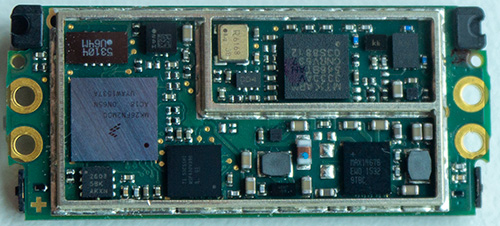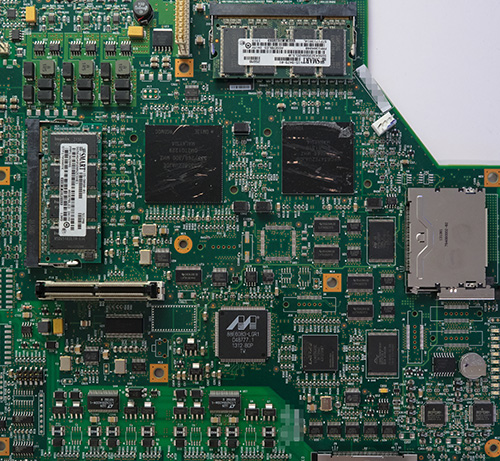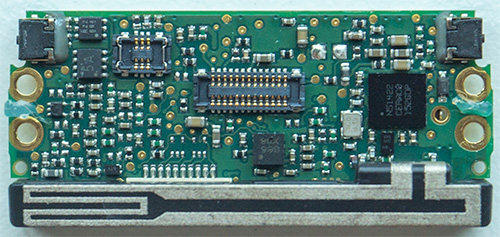The Ware for February 2022 was a Garmin Vivoactive smartwatch. SAM correctly guessed it, down to the model number and FCC ID. Great work! Congrats, and email me for your prize!
Archive for the ‘name that ware’ Category
Winner, Name that Ware February 2022
Thursday, March 31st, 2022Name that Ware, February 2022
Monday, February 28th, 2022The Ware for February 2022 is shown below.

I was cleaning out my desk and decided to give this a crack and see what was inside. There’s a couple things I found notable about the design. First, basically every part on the inside is a catalog part or an OEM variant of one — I’m used to opening up these types of devices and seeing more full custom ASICs, weirdo unsearchable Japanese or Chinese part numbers, or anonymous black globs of glue. It’s kind of neat that catalog parts have caught up to the point where you could build one of these essentially just ordering stuff off of Digi-Key (alternatively, one could lament that it’s sad that “Moore’s Law” (in the broader sense) has slowed to the point where it’s no longer economically viable to spin custom ASICs even for products like this). Second, I really liked the antenna. It’s making good use of all three spatial dimensions, yet the design is clean and simple. It is a little bit odd, though, that no underfill was used to secure any of the chips, but maybe that’s part of the reason why it’s in my scrap pile.
Winner, Name that Ware January 2022
Monday, February 28th, 2022The Ware for January 2022 was a Cisco Small Business Unified Communications UC540W-FXO-K9 VoIP gateway. Thanks again to jackw01 for contributing this ware! As for the winner, Ryan nailed the model number so he wins the prize (congrats and please email me!), but I have to mention I found GotNoTime’s comment about Cisco’s love affair with SMART memory interesting and informative. Thanks for playing!
Name that Ware, January 2022
Monday, January 31st, 2022The Ware for January 2022 is shown below.

This is another fine ware contributed by jackw01. I’ve cropped it to hide the connectors, which are a dead give-away, but I figure despite the cropping this has a very good chance of being quickly and exactly guessed. I always find this style of ware entertaining by the still-present debug headers and its top-shelf selection of components.
Winner, Name that Ware December 2021
Monday, January 31st, 2022The Ware for December 2021 was a portion of the main PCB from an Experion Automated Electrophoresis Station. According to Nava (thanks again for the ware!):
So all the high voltage stuff is to drive the electrophoresis, up to 2200V. The idea is rather than running gels this instrument does everything on microfludic chips, these have 16 independent channels, hence the 16 drive voltages.
I’ll give the prize this month to FETguy. I, too, initially thought this was some sort of a piezo driver array, but I did not have the insight to realize that the voltage doublers were incapable of playing that role and ended up chasing a dead end. Thanks for sharing your analysis. Congrats and email me for your prize!

